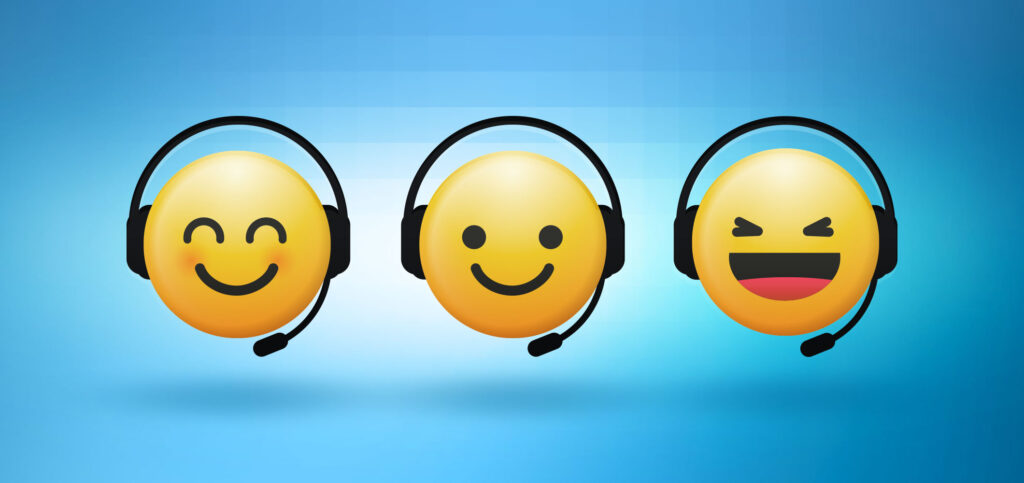
Gamification is the secret to some of the most successful contact centers.
It encourages reps to achieve goals, motivates them to be more productive, and makes them feel more fulfilled in their roles. The happier the employee, the better the customer experience.
The strongest motivating value for contact center employees worldwide is personal responsibility—achieving tasks and feeling like they’ve completed something. A gamified workplace can give contact center managers new ways to motivate their employees and build a sense of accomplishment.
Using this guide, you’ll learn how to gamify your call center and create an environment where employees flourish.
What is gamification?
Gamification is the process of applying game design elements to non-game contexts. Contact centers, like many organizations, are function-driven. Their goal is to complete tasks quickly. In the workplace, employees are motivated by necessity rather than desire.
Games benefit human well-being and can keep us engaged for long periods of time. You can create a desired and joyful experience for employees by making daily call center tasks feel like a game.
Gamification is an effective method for engaging employees in contact centers. By creating a friendly competitive environment, employees are motivated to grow as individuals, work together effectively as a team, and boost productivity. Gamification also allows organizations to enhance skill development and training and improve KPIs such as average handle time and opportunities created.
“In my own view, gamification is the craft of deriving fun and engaging elements found typically in games and thoughtfully applying them to real-world or productive activities.”
— Yu-kai Chou, author of Actionable Gamification
How does gamification help my business?
The use of gamification can help your contact center create environments and systems that inspire and motivate employees. According to Gartner, more than 70% of organizations already use gamification. Here are some of the ways gamification can help your contact center.
Motivates employees
Studies show that around 15% of employees are actively disengaged at work. Among actively disengaged workers in 2021, 74% are either actively looking for new employment or watching for openings. The use of games can engage and energize employees.
Opportunities to win rewards and recognition motivate employees. 83% of employees who received gamified training feel motivated, and 61% of employees who received non-gamified training feel bored and unproductive.
Gamification also allows employees to track progress and get immediate feedback. Research suggests that the more you monitor your progress towards a goal, the more likely you are to succeed.
Encourages action
Gamification encourages employees to complete tasks and compete against others in a fun and friendly atmosphere. When a specific work task is gamified, 89% of surveyed employees report feeling competitive and eager to finish it.
Saves money
A recent Gallup study found that highly-engaged workers outperform their peers by 147% in earnings per share. In addition, disengaged employees are more likely to leave a company.
The average cost of replacing a call center agent ranges between $10,000 and $15,000. By gamifying your workplace, you can lower employee turnover and improve agent performance, resulting in a higher return on investment.
How to Integrate Gamification into Your Contact Center
1. Set goals and objectives
Identifying your goals is the first step. Maybe your aim is to speed up response times and reduce abandons. Or perhaps you want to change your company culture for the better. Break these goals into smaller objectives that you can accomplish quarterly.
2. Choose KPIs
Managers can use a variety of KPIs to measure progress. Among them are:
- Calls made
- Cases resolved
- Average speed to answer
- Opportunities created
- Tasks complete
- Revenue won
3. Launch
The next step is to describe the rules of the game. Answer questions like:
- How can people or teams win?
- What are the rewards?
- When does the contest start and finish?
Make sure you promote the new game at your next company-wide meeting or newsletter. Give people some time to become familiar with the game once it begins. Once they get used to it, you can add more elements.
4. Track performance
Keep track of the remaining time and team scores throughout the game to keep employee engagement high. Keep participants informed of their progress by using visual progress trackers. Real-time updates from a digital leaderboard will ensure that everyone is always in the loop.
Tracking progress can be done in a variety of ways:
- Badges
- Leaderboards
- Points and scores
- Levels
- Challenges
5. Reward
Participants are more likely to enter contests that offer compelling prizes. Classic rewards like overseas vacations, concert tickets, and bonuses are effective, but a creative rewards program can also be effective. Consider team gifts such as paid lunches and after-hours socials, or consider donating to the winning charity. Find out what incentives your employees want.
6. Coach
You can turn games into learning experiences by coaching your employees. With the right tips, techniques, tools, and resources, you can help your sales reps develop new skills and thrive. Schedule regular 1:1 meetings with agents to give feedback, resolve issues, and help people grow in their roles.
3 Unique Ideas for Contact Center Gamification
1. Contact center bingo
The idea is that every employee is given a bingo card, and when they make calls, they get to mark off spots on it for things like “hold time less than 1 minute” or “upgraded 6 customer packages” etc. The goal of the game is to keep the teams on track to achieve their daily goals while them with small prizes at the same time.
2. Daily prizes
Consider offering daily prizes to motivate employees. It relates to their sense of responsibility and achievement. Connect rewards to employee values around health and well-being.
You can reward employees for:
- A high number of positive responses
- Quick response times
- Maximum number of calls answered
Then, reward them with different perks like:
- Fancy coffee drink
- Gift cards
- Earning points for larger prizes
3. Contests
Contests are a great way to recognize individual agents. Select the metrics agents will compete on, such as sales or cases resolved, and the timeframe they will compete on.
The person who gets the highest score in each metric gets a medal or ribbon. Celebrate your employees’ performance at the end of the contests by naming the top performers.
Gamification Pitfalls to Avoid
Whether it’s your first or fifth time gamifying a call center, keep the following things in mind:
- Don’t inspire too much competition. Contests between employees are supposed to be fun, not toxic.
- No rules. Sometimes game makers don’t make the rules clear for employees. Set rules that if broken, the persons score resets to zero.
- Focusing only on monetary rewards. Some 65% of employees prefer non-monetary incentives instead of monetary rewards. Look for non-cash incentives you could give employees upon completing a game.
- Complicated game mechanics. Keep games simple and easy to understand. The goal is to incentivize the right behaviors and achieve specific goals, not challenge employees with games they cannot finish.
Creating a Productive Work Environment with Gamification
There’s no doubt that gamification helps improve call center agent engagement. Healthy competition between contact center agents motivates them to do better work, which results in higher customer satisfaction. Remember to keep games exciting and fun, not toxic and overly competitive.
By following the guide above, you can create a gamification strategy that empowers agents, lowers retention, and improves performance metrics for your contact center.


